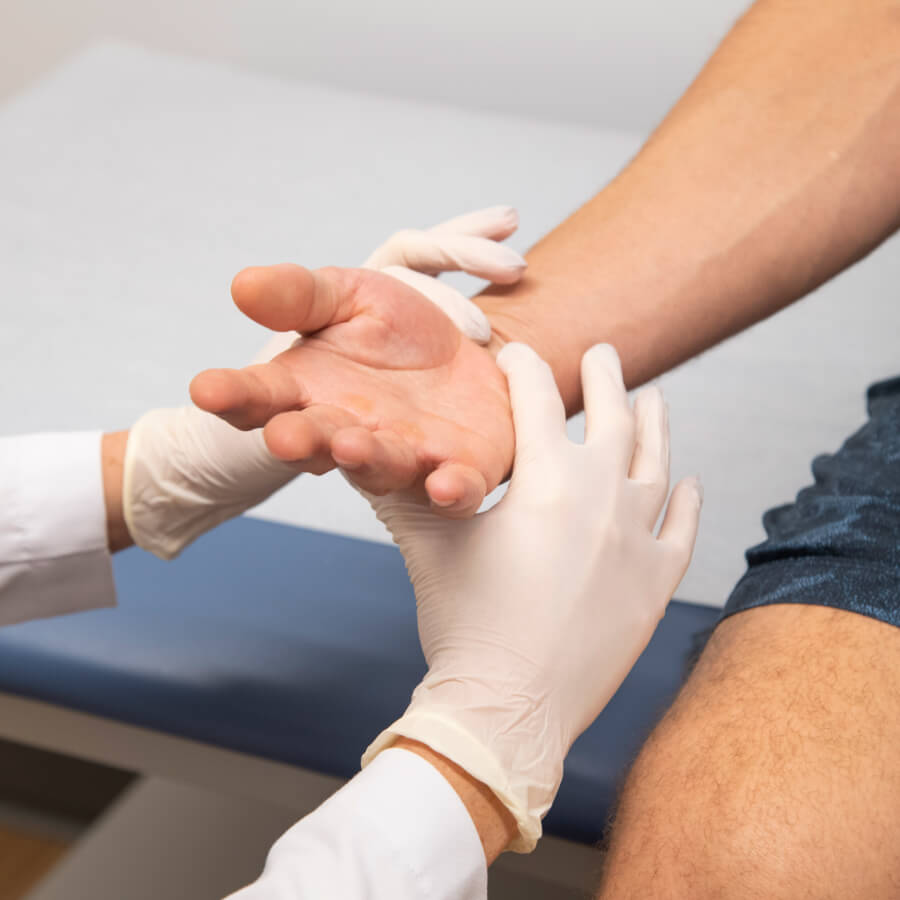What is a Ganglion Cyst?
A cyst is a sac-like sphere made from membranous tissue that can be filled with air, fluid, or other substances. They can grow nearly anywhere on the body or under the skin, and many of them can cause pain if left untreated.
A ganglion cyst is a non-cancerous cyst that can appear on the joints in your hands, wrists, feet, and ankles. In most cases, they will be filled with a jelly-like fluid and take on an ovular shape. Depending on where they form, they can cause pain if they press a nerve. They can also affect the mobility of your joints depending on placement.
Get Advanced Hand, Wrist & Elbow Care
Right In Your Neighborhood
Finding the treatment that’s right for your hand, wrist, or elbow problem is our focus at The Orthopedic Health Center. We use non-surgical treatments whenever possible. When you do need surgery, our expert surgeons help you heal faster and with less pain. All right in your neighborhood: Hoboken and Jersey City.
Ganglion Cyst Symptoms

A ganglion cyst will typically appear near the jointed areas in your wrist, hands, ankles, and feet. When a cyst appears near a joint, you may find that you can’t move your wrist, handles, ankles, and/or feet as well because the cyst is preventing you from having your full range of motion.
Ganglion cysts may cause no pain or symptoms or they can cause pain, if they press against a nerve. They can also cause weakness in the surrounding muscle, tingling, and numbness in certain cases. The ganglion cyst may be visible beneath your skin or hidden from the naked eye, depending on the size.
Only a doctor will be able to diagnose a ganglion cyst, so it’s best to schedule an appointment with an orthopedic doctor before seeking treatment.
Ganglion Cyst Causes and Risk Factors
The cause of ganglion cysts remains unknown, but certain risk factors seem to increase the chance of developing one. These factors are:
- Injury to the tendon or joint. If you’ve injured your joint or tendon before, you might be more prone to ganglion cysts.
- Osteoarthritis. Those who have arthritis that causes decomposition of the bones are more likely to develop these cysts in the areas affected by their arthritis.
- Age and sex. If you’re female, between the ages of 20 and 40, you might be more at risk for developing ganglion cysts.
The Most Advanced Surgical Techniques
Take a closer look at the level of care to expect at The Orthopedic Health Center.
Ganglion Cyst Treatment
In many cases, you may never know that you have a ganglion cyst – if this happens and you feel no pain, you don’t require treatment, and it might go away on its own. However, if you are suffering from pain or other symptoms, your doctor may remove the fluid from the cyst to reduce it’s size or immobilize the area using a brace. Depending on the severity of the ganglion cyst, surgery may also be recommended.
Takeaway
Ganglion cysts tend to appear near joints and tendons, and may or may not cause pain. It is best to consult with an orthopedist to determine the severity of your ganglion cyst. Treatments are available! Call us today to start feeling better.
Additional Resources
Appointments available now.
